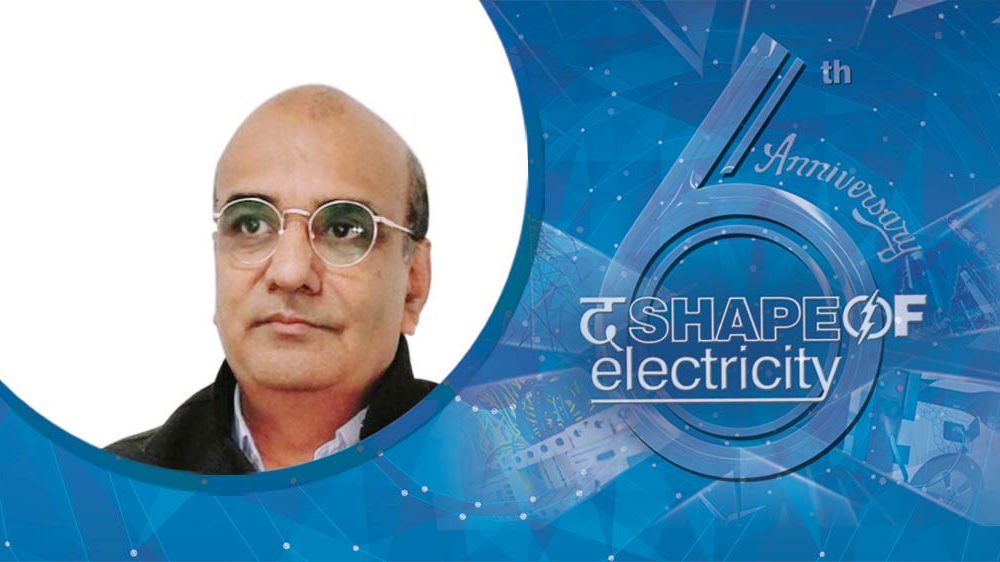Better incentives critical for renewable sector
By EPR Magazine Editorial November 14, 2018 11:18 am IST
By EPR Magazine Editorial November 14, 2018 11:18 am IST

Dr Sanjiv Kawishwar, Senior Vice President, Technology & System Certification, ReGenPowertech Private Limited
“There is a high level of localisation, which helps ensure quality as well as tying well with the Make in India initiative”
The Indian power has been undergoing major transformation and the success of offshore wind will be closely linked to supply chain scaling and optimisation, says Dr Sanjiv Kawishwar, Senior Vice President, Technology and System Certification, ReGenPowertech Private Limited.
The key priorities
Higher renewable share of generation, market-based price discovery, high localisation, and private sector involvement are key priorities in the power sector today, all necessitating good policy and regulation. India is committing to various strategies required for better grid management. New metering technologies such as smart metering and sub-metering have seen adoption. Increased use of net metering is improving grid efficiency for distributed generation sources such as rooftop solar.
Investment in storage technologies is also crucial for increased renewable share. Union Power Minister RK Singh has recently declared that storage manufacturing may be made obligatory, given that there is no obvious monetary benefit for investments in storage. However, a long-term solution would be good for the power market to recognise the benefit of storage and assign an appropriate premium.
Electrification of energy demand linked to India’s growth
Reliance on fossil fuels is highly problematic in India. Oil companies are reliant on dollar-denominated debt and payments, which weaken the Indian currency, and thus make oil inordinately expensive in India. This comes at a time when investors are preferring safety in US bonds at the increased rates today, causing corresponding rate hikes in India. It is the high oil import that is the basic cause of this environment of high inflation and low investment.
Other inefficiencies and costs exist for fossil fuels; for example mining, logistics, inventory, and refining. Heat loss during combustion is another inefficiency.
Current investment in energy storage systems (ESS) is appropriate for renewable sources such as wind and solar. Wind and solar ESS can be distributed near end-users, minimising under-utilisation of the grid. Thus, renewable energy can largely replace fossil fuels while actually improving grid efficiency. Grid management with distributed generation is important both for urban and rural energy demand. Off-grid technologies and LVDC will further improve grid management from the user-perspective.
GBI – Influential incentive mechanism for investor
Generation-Based Incentive (GBI) has been very influential in reducing uncertainty for investors. GBI has been a highly used incentive mechanism in developed economies because it incorporates availability and grid issues from the developer perspective. In India, where power evacuation is a big issue, GBI is the most influential incentive mechanism for investors.
There has been a preliminary wind resource assessment with LIDAR off the Gujarat coast. FOWIND made a desk-based geotechnical study of the sea bed off the coasts of Gujarat and Tamil Nadu. India is known to have a soft sea bed, which will increase cost of installation. Costs associated with transportation, installation and O&M will be crucial for Indian offshore. Success of offshore wind will be closely linked to supply chain scaling and optimisation. Required capability can be developed only slowly, so all required regulations will have to be streamlined to achieve this.
Larger capacity Wind Turbine Generators
(WTGs) are finding their way to India, with increased heights. The manufacturing capability and good quality management in India means that the highest capacity turbine technology available for use today (8-10MW) may be transferred without issue to India. This is key to project viability and investor confidence given the extremely high capex involved.
Offshore wind tariffs will have to be at a substantially higher level than onshore to encourage investment. A tariff at the range of Rs6-8 may be viable. Clear policies have to be developed and off take commitment enforced.
Steps to be taken to meet energy demands
Annual capacity for production is already high at near 10GW, of which only around 3GW is actually used. There is a high level of localisation, which helps ensure quality as well as tying well with the Make in India initiative. The existence of manufacturing capability means that capacity can be beefed up even more by new players. Despite this, chasing a small market does not encourage an optimised supply chain, thus causing scale issues. Costs cannot come down when scaling up quickly unless there is economy of scale.
The best wind sites have been used and cannot be reused easily for repowering because of land acquisition issues. Costs go up because higher turbines have to be used with longer blades, making wind power even more capex intensive. Therefore, very specific incentives have to be created to encourage capital outlay and reach full capacity. Clarity on the incentives regime will help increase capacity in a permanent way. Since power evacuation is a bottleneck, green corridors have to be completed fast with more investments.
What is your take on the current wind energy tariffs of ₹2.9-3.0 per unit?
Currently DISCOMs have to pay additional fixed tariff to thermal power plants when off taking renewable generation. This makes DISCOMs reluctant to obtain wind power at over ₹3 per unit. As a consequence, wind developers lose generation, which is not compensated in time. Renewable Purchase Obligations (RPOs) need to be enforced to overcome this. Creation of a Renewable Law can help make RPO mandates enforceable.
We use cookies to personalize your experience. By continuing to visit this website you agree to our Terms & Conditions, Privacy Policy and Cookie Policy.